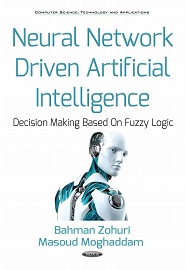
English | 2017 | ISBN: 978-1536121148 | 365 Pages | PDF | 10 MB
With today’s growing and overloading volume of information, it is becoming tremendously difficult to analyze the huge amounts of data that contain this information. It makes it very strenuous and inconvenient to introduce an appropriate methodology of decision-making fast enough to the point that it can be considered as real-time. The demand for real-time processing information and related data both structured and unstructured is on the rise and consequently makes it harder and harder to implement correct decision making at the enterprise level to keep the organization robust and resilient against either manmade threats or natural disasters.
Neural networking and fuzzy systems combined show how Artificial Intelligence (AI) can be driven by these combinations as a trainable system that is more dynamic than static when it comes to machine and deep learning language to deal with both adversary and friendly events in real-time. Dynamic systems of AI that are built around such an innovative approach allows the robots of the future to be more adaptive with mechanisms such as principle adoption, self-organization, and the convergence of global stability from the viewpoint of business and intelligence security needed in today’s cyber world.
To deal with uncertainty, vagueness, and imprecision, Lofti A. Zadeh introduced fuzzy sets and fuzzy logic. In the present book, fuzzy classification is applied to extend portfolio analysis, scoring methods, customer segmentation and performance measurement, and thus improves managerial decisions. As an integral part of the book, case studies show how, fuzzy classification – with its query facilities – can extend customer equity, enable mass customization, and refine marketing campaigns
This book shows interoperability between the two sciences/techniques show how:
- To utilize fuzzy theory of the first and second kind to an adaptive control; and
- How, to invent a structured fuzzy system and robots of future, with unsupervised neural network techniques to face an unstructured world of big data, and unpredictable global events all in real-time
An important aspect of this approach is to examine biological neural systems and study how artificial neural networks are, how they are based on them, and how they are driven by them as well. Key areas discussed include:
- Structural diversity;
- Temporal lobe;
- Origins of artificial neural systems;
- Brain structure and function;
- Biological nerve cells;
- Synapses;
- Random and fixed positions in the brain’s neural networks; and
- How biological systems really compare to computational neural networks.
Resolve the captcha to access the links!